
Ancient China has gifted the world quite a few notable inventions. Modern agriculture, shipping, astronomical observatories, decimal mathematics, and even simple items like toothbrush, banknotes, tea, whiskey, gunpowder, the game of chess, and much more, have all come from China.
For many reasons, though, it is the Han Dynasty that is considered to be the golden age in Chinese history. When Liu Bang, the founder and first emperor of the Han dynasty, commenced his rule in 206 B.C., China was about to enter one of the finest eras of its existence. The period, which lasted for more than 400 years, saw great advancements in literally every field. There were major breakthroughs and developments in science and technology during the period and many of them changed the human way of life forever.
Here, we look at a few major inventions from the Han dynasty that had a great impact on the world.
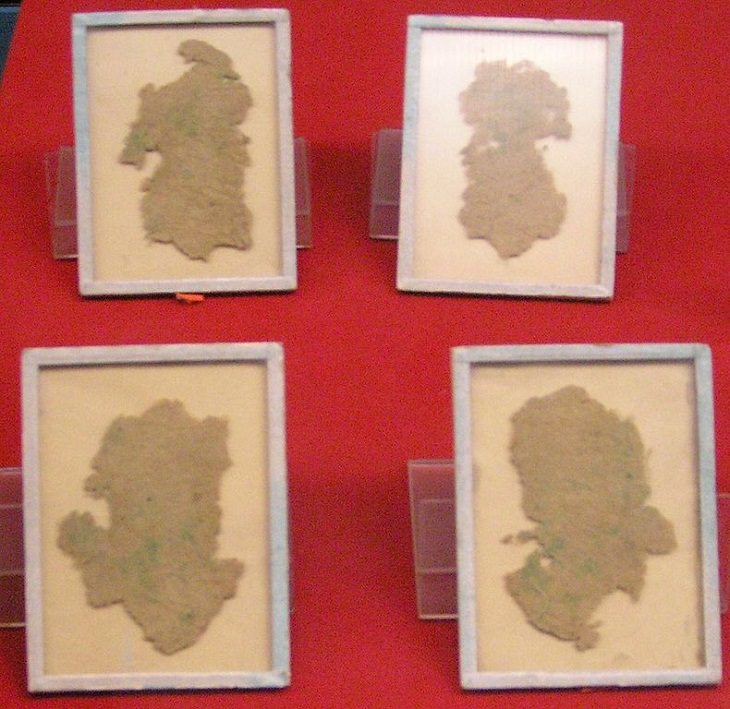
Image Source - Wikimedia Commons
Before the invention of paper, bones, tortoise shells, and bamboo slips were mostly used as writing surfaces. Things, however, changed during the Han dynasty. Cai Lun, a eunuch during the Eastern Han Dynasty, is credited to have invented the first genuinely high-quality writing paper in 105 A.D. Lun made the paper by crushing and blending tree bark, hemp, linen rags, and scraps from fishing nets. The next step was to process this mixture with lye to break it down into thinner fibers. These materials were easily found in the region at cheap costs and thus large quantities of paper began to be produced.
The technique of making this paper was then exported to Korea in 384 A.D. From there, a monk took the skill to Japan in 610 A.D. Gradually, paper-making found its way all over the world and it turned out to be one of the most influential inventions in history.
The earliest scrap of paper still in existence that was made in the Han dynasty was excavated from the Han Tomb of Wu Di (140-87 BC) in 1957 at Baqiao, Xi'An, China.

The wheelbarrow is almost taken for granted today but the fact is that it changed the world of countless farmers when it was invented back in the day. There are a few theories as to how the wheelbarrow came about. Many historians believe that someone guiding a two-wheeled cart by hand thought of a man-sized vehicle for small loads. Some historians also say that the wheelbarrow may have been adapted from a broken wagon.
What we know for certain, however, is that wheelbarrows were used in Ancient China, Greece, and Rome. The earliest wheelbarrow is supposed to have been developed in China, during the Han dynasty, around 100 B.C. Those wheelbarrows had a single wheel at the front of the load and the person holding the handles could carry about half the weight. The primary purpose of this invention back then was to transport the goods of farmers, especially harvest supplies, from one place to another comfortably.
According to the history book 'The Records of the Three Kingdoms', by the ancient historian Chen Shou, a new form of wheelbarrow was invented by the prime minister of Shu Han, Zhuge Liang, in 231 A.D. as a form of military technology. Back then it was known as “wooden ox”. The vehicle had a centrally mounted wheel and its handles faced forward so that it could be pulled easily. The wooden ox could be used by a soldier to carry sufficient food to feed four men for the entire month.
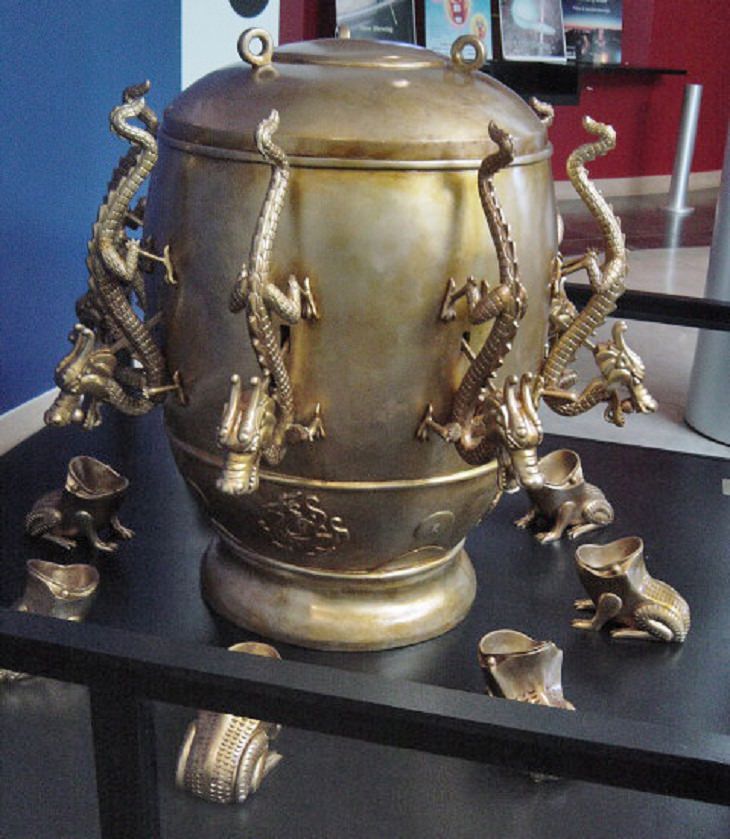
Image Source - Wikimedia Commons
Not many are aware of the fact that the first seismograph was actually invented in China in the Eastern Han dynasty in 132 A.D. The device was developed by Zhang Heng, the director of astrology in the late Han court. The main purpose of the device was to monitor distant earthquakes that occurred in China in those days.
When Heng introduced the device to Emperor Shun Yang Jia it had a rather simplistic design with an urn that was furnished with a pendulum. On the outside, several metal balls were held on the mouths of cast-metal dragons. There were cast-metal frogs below that waited with open mouths for the balls to fall. Whenever this seismograph would pick up vibrations or tremors on the ground, it would shake and drop a ball from the mouth of a dragon into the metal frog. This would then create a loud clang, notifying people about the direction in which the earthquake occurred. Incidentally, the first time when Heng’s device clanged, no one in the court could feel anything and it was assumed that the seismograph had picked up a wrong signal. However, a few days later a messenger, from a village about 400 miles away, arrived in the court to inform that an earthquake had happened there a few days back.
Thus, Heng’s seismograph was a success and found great use in China as a direction finder for earthquakes for more than 1,400 years before it was known in Europe.
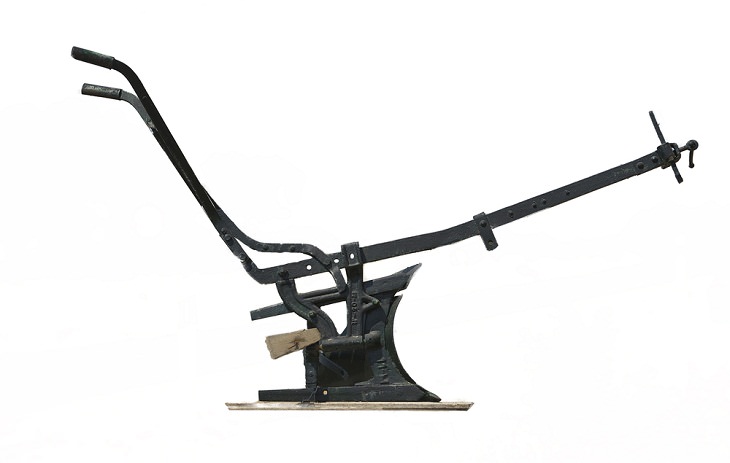
Up until the 6th Century B.C., the Chinese were using iron plows to till farms. About two hundred years later, an imaginative Han dynasty inventor came up with the Moldboard Plow which was called kuan in those days. The device had plowshares that were made of malleable cast iron. Its design had a central ridge that ended in a sharp point and wings which allowed pushing the soil away to reduce the friction. The plow also helped the Chinese practice of contour plowing: throwing the soil off the plow to reduce friction.
The moldboard plow was a huge boon for Chinese farmers in those days and rapidly spread in the next two centuries to different parts of the world.
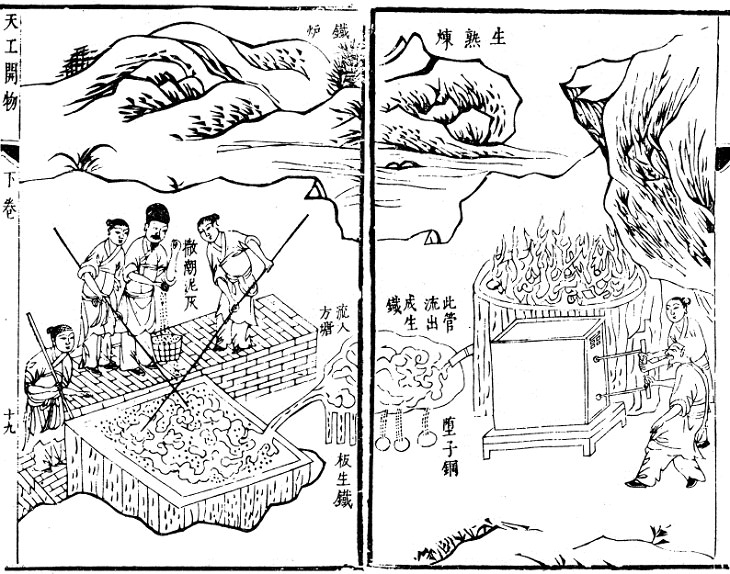
Image Source - Wikimedia Commons
A blast furnace is a type of metallurgical furnace that is used for smelting to produce industrial metals such as iron, lead, or copper. Blast furnaces were built during the Han dynasty of China in the early 200s B.C. Early Chinese metallurgists built these blast furnaces that pumped out a blast of air into a heated pack of iron ore. This then led to the production of cast iron.
Interestingly, these early blast furnaces had clay walls and they used phosphorus-containing minerals for flux. In the later years, a gifted mechanical engineer and metallurgist of the Eastern Han Dynasty named Du Shi improved upon the blast furnace by applying the power of waterwheels to piston-bellows in forging cast iron.
The Chinese blast furnace was used actively until the 20th century.
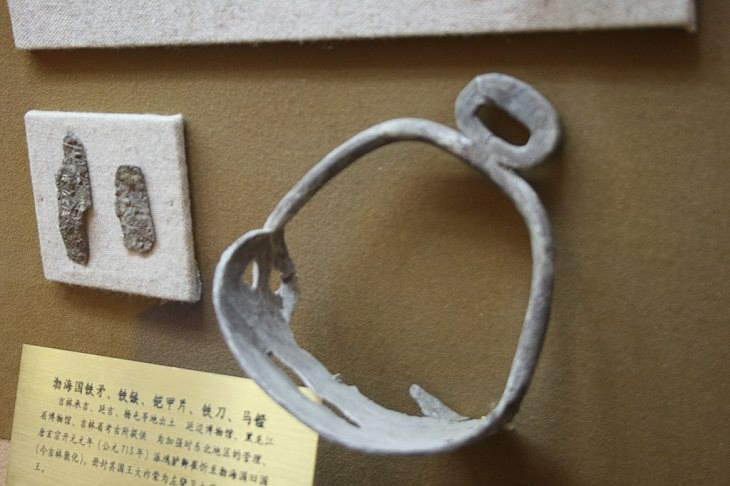
Image Source - Wikimedia Commons
Ancient horsemen had to deal with an odd problem. Their legs would dangle on the side as they didn’t have any device to rest their foot on and they would often tumble off their horses. It was an inventor from the Han dynasty who finally came up with an ingenious solution. He made cast iron and bronze devices that a horse rider could slip his foot into. These stirrups were quite durable, hung in suspension from the saddle, and greatly increased the rider's stability. While this may not seem like anything remarkable right now, the invention was a breakthrough in its time and made the life of horsemen so much easier. Its popularity was immense and over the next few centuries, the invention spread across Asia to Europe. The Han dynasty stirrup eventually helped knights from Medieval England ride their horses in their heavy armors without falling off.

Suspension bridges have made transport easier all over the world for centuries now. They are roadways suspended by cables, ropes, or chains from two tall towers. Think of some of the most iconic suspension bridges of the world like the Golden Gate Bridge or Brooklyn Bridge and imagine how transportation would suffer if they suddenly vanished. Their importance hence cannot be overemphasized. Interestingly, few know that it was during the Han dynasty that the world saw the development of the first suspension bridge, almost 1,800 years before such bridges were known to the West.
In his book, 'The Genius of China', professor of history and philosophy of science, Robert Temple, mentions that genius artisans of the Han dynasty made a suspension bridge that had been developed from simple rope bridges created to cover small gorges. However, by 90 A.D. engineers of the Han empire began developing more refined suspension bridge structures using wooden planks. You can still find many wooden suspension bridges in some parts of the world.